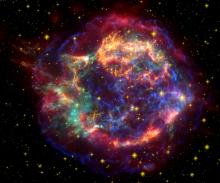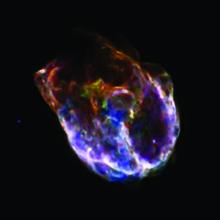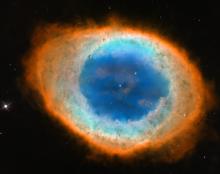Listen to today's episode of StarDate on the web the same day it airs in high-quality streaming audio without any extra ads or announcements. Choose a $8 one-month pass, or listen every day for a year for just $30.
You are here
Growth Spurt
One of the most impressive galaxies around climbs high across the south on spring nights. M87 is a giant elliptical galaxy, so it looks like a fuzzy rugby ball, with no spiral arms or other major features. It’s in the east at nightfall, and is visible through a small telescope.
M87 contains several times as many stars as our home galaxy, the Milky Way. But like most other elliptical galaxies, it’s used up its supply of gas, so it doesn’t have the ingredients for making new stars.
But a galaxy that’s like a younger version of M87 is making lots of new stars. It’s called COSMOS 11494. It’s about 11 billion light-years away, so we see it as it looked when the universe was just three billion years old.
Despite its youth, the galaxy already has several times more stars than the Milky Way does today.
And it gave birth to those stars in a hurry. Astronomers came to this conclusion after measuring two elements in the galaxy: magnesium and iron.
Magnesium is cast into space when heavy but short-lived stars explode. In contrast, iron comes mostly from the explosions of longer-lived stars. The galaxy has the highest magnesium-to-iron ratio ever seen in a massive galaxy. That indicates the galaxy formed all of its stars in less than half a billion years.
Alas, we can’t see the galaxy as it looks today. But if we could, it might resemble M87 — a giant galaxy that probably also gave birth to many stars in its youth.
Script by Ken Croswell, Copyright 2016






